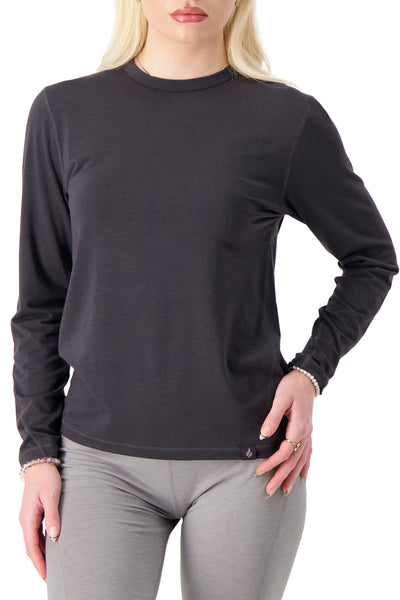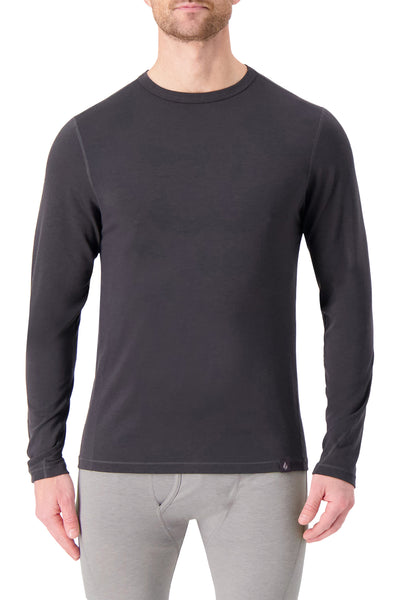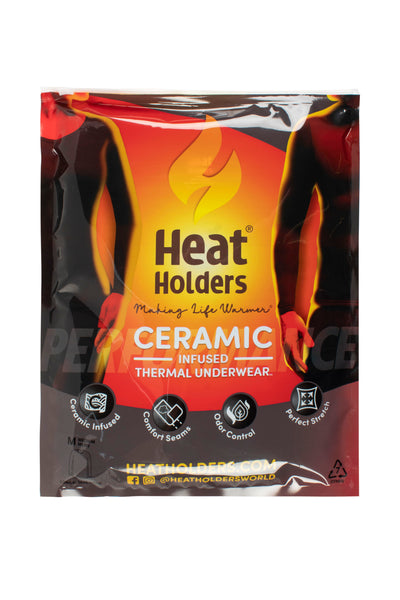A base layer top is an essential piece of clothing designed to be worn directly against the skin. It is the foundation of a layered clothing system, providing comfort, moisture management, and insulation. Whether for outdoor activities, athletic pursuits, or everyday wear, understanding the purpose and features of a base layer top can significantly enhance one's experience in various environments.
The Purpose of a Base Layer Top
The primary function of a base layer top is to wick moisture away from the skin, keeping the wearer dry and comfortable. This is particularly important during physical activities where sweat can accumulate. A base layer can also help regulate body temperature, making it easier to adapt to changing conditions. Whether you’re hiking, skiing, or engaging in high-intensity workouts, a good base layer is an essential part of your gear, ensuring you can focus on your performance rather than discomfort.
Moisture Management
Moisture management is crucial for comfort during any activity. Base layer tops are typically made from materials that draw sweat away from the skin and allow it to evaporate quickly. This process helps prevent the chilling effect that can occur when sweat cools on the skin, particularly in colder climates. Fabrics like Merino wool and synthetic blends are popular choices for their excellent moisture-wicking properties. Moreover, many modern base layers incorporate advanced technologies that enhance breathability, ensuring that even during the most strenuous activities, the fabric works effectively to keep you dry.
Temperature Regulation
Temperature regulation is another key benefit of wearing a base layer top. These garments are designed to trap heat close to the body while still allowing excess moisture to escape. This balance ensures the wearer remains warm without overheating during exertion. The construction of base layer tops often includes features such as flatlock seams to reduce chafing and strategic ventilation zones to enhance airflow. This thoughtful design contributes to comfort and allows for a greater range of motion, making them ideal for activities that require flexibility and agility.
Furthermore, the versatility of base layer tops extends beyond temperature control and moisture management. Many models are designed with odor-resistant properties, utilizing antimicrobial treatments to keep you feeling fresh even after a long day of wear. This is particularly beneficial for multi-day adventures where laundry facilities may be limited. Additionally, base layers come in various thicknesses and styles, from lightweight options for summer sports to heavier versions for winter activities, allowing individuals to choose the perfect fit for their specific needs and preferences.
Materials Used in Base Layer Tops
Base layer tops are constructed from a variety of materials, each offering unique benefits. The choice of fabric can significantly influence the performance and comfort of the garment. Understanding these materials can help consumers make informed decisions when selecting base layers for their specific activities, whether it's hiking, skiing, or simply lounging around.
Natural Fiber
-
Wool: Merino wool is a popular choice for base layers due to its natural moisture-wicking properties and ability to regulate temperature. It is soft, breathable, and odor-resistant. Additionally, Merino wool has the remarkable ability to keep you warm in cold conditions while remaining cool during warmer weather, making it a versatile option for year-round wear.
Synthetic Fabrics
-
Polyester: This is a common material for base layers because it dries quickly and offers excellent moisture-wicking capabilities. Polyester fibers are engineered to pull moisture away from the skin, allowing for a drier and more comfortable experience during intense workouts or long outdoor adventures.
-
Nylon: Known for its durability and stretch, nylon base layers provide a snug fit and are resistant to wear and tear. This resilience makes nylon an ideal choice for activities that involve a lot of movement, such as climbing or running, where the fabric needs to withstand friction and stress.
In addition to these primary materials, many base layers incorporate blends of natural and synthetic fibers to capitalize on the strengths of both. For instance, a blend of Merino wool and polyester can enhance moisture management while maintaining the softness and temperature-regulating properties of wool. These hybrid fabrics are becoming increasingly popular as they offer the best of both worlds, catering to the diverse needs of athletes and outdoor enthusiasts alike.
Furthermore, advancements in textile technology have led to the development of specialized fabrics that include features such as antimicrobial treatments and UV protection. Antimicrobial treatments help to combat odor-causing bacteria, ensuring base layers remain fresh even after prolonged use.
Meanwhile, UV protection is particularly beneficial for outdoor activities in sunny conditions, providing an extra layer of defense against harmful rays. As consumers become more aware of these innovations, the demand for high-performance base layers continues to grow, pushing manufacturers to explore new materials and technologies.
Types of Base Layer Tops
Base layer tops come in various styles and designs, catering to different activities and preferences. Understanding the differences can help individuals choose the right top for their needs.
Short Sleeve vs. Long Sleeve

Short sleeve base layers are ideal for warmer conditions or high-intensity activities where overheating may be a concern. They offer freedom of movement and are often used in layering systems during summer months. These tops are typically made from lightweight, breathable fabrics that wick moisture away from the skin, ensuring you stay cool and dry even during vigorous exercise. Many athletes prefer short sleeves for activities like running, cycling, or climbing, where arm mobility is crucial.
Long sleeve base layers provide added warmth and protection from the elements. They are particularly beneficial in cooler weather, as they help retain heat while still managing moisture. In addition to their thermal benefits, long sleeve tops often feature thumbholes or extended cuffs, which help keep the sleeves in place and provide extra coverage against wind and chill. This makes them a popular choice for skiing, snowboarding, or any outdoor activity where exposure to cold air is a concern.
Compression vs. Relaxed Fit
Compression base layers are designed to fit tightly against the skin, providing support to muscles and improving circulation. This style can enhance performance during high-intensity activities. Many athletes find that wearing compression tops reduces muscle fatigue and soreness, allowing for longer and more effective workouts. Additionally, these tops often feature advanced fabric technologies that aid in moisture management and temperature regulation, making them a favorite among competitive runners and cyclists.
Relaxed fit base layers offer more freedom of movement and comfort, making them suitable for casual wear or less intense activities. They are often preferred for lounging or everyday use. The looser fit allows for better airflow and can be more forgiving in terms of sizing, making them a versatile option for various body types. Many brands also incorporate stylish designs and colors into their relaxed fit tops, allowing wearers to transition seamlessly from workout to social settings without sacrificing comfort or style. This adaptability makes them a staple in many wardrobes, perfect for everything from yoga classes to weekend outings with friends.
Choosing the Right Base Layer Top
Selecting the right base layer top involves considering several factors, including activity level, climate, and personal preference. Here are some tips to guide the decision-making process.
Activity Level
For high-intensity activities, a lightweight and moisture-wicking base layer is essential. Look for options that offer breathability and quick-drying properties. These features help to regulate body temperature and prevent the discomfort of sweat accumulation. Conversely, for lower-intensity activities or colder climates, a thicker, insulating base layer may be more appropriate. Fabrics that provide a snug fit can trap heat effectively, ensuring warmth is maintained during those chilly outdoor adventures.
Climate Considerations

In warmer climates, lightweight synthetic materials are often the best choice, as they help keep the body cool. Fabrics like polyester or nylon are designed to pull moisture away from the skin, allowing for evaporation and a cooling effect. In contrast, colder environments may require a base layer made from wool or a thicker synthetic blend to provide adequate warmth. Merino wool, for instance, is excellent at insulating heat and has natural moisture-wicking properties, making it a versatile option for various temperatures.
itionally, consider the fit of the base layer top. A snug fit is generally recommended to maximize moisture management and thermal efficiency. However, some individuals may prefer a looser fit for comfort, especially during long periods of wear. It’s important to pay attention to the seams and construction of the garment; flatlock seams can reduce chafing and enhance comfort during movement. Ultimately, the right base layer top should feel like a second skin, allowing for freedom of movement while effectively performing its primary function of moisture management and temperature regulation.
Care and Maintenance of Base Layer Tops
Proper care and maintenance of base layer tops can extend their lifespan and maintain their performance. Following the manufacturer's care instructions is essential, but here are some general tips:
Washing Instructions
-
Use a gentle cycle with cold water to prevent damage to the fabric.
-
Avoid using fabric softeners, as they can clog the moisture-wicking properties of the material.
-
Air drying is preferable; if using a dryer, opt for a low heat setting.
Storage Tips
When not in use, store base layer tops in a cool, dry place, away from direct sunlight. Avoid folding them tightly to prevent creasing and damage to the fabric.
Benefits of Investing in a Quality Base Layer Top
Investing in a quality base layer top can yield numerous benefits, particularly for those who engage in outdoor activities or sports. Here are some key advantages:
Enhanced Comfort
A well-fitted base layer top provides a comfortable fit that moves with the body, reducing chafing and irritation during physical activities. This comfort can significantly enhance performance and enjoyment.
Improved Performance
By effectively managing moisture and regulating temperature, a quality base layer can improve overall performance. Athletes and outdoor enthusiasts often find that the right base layer helps them maintain energy levels and focus.
Common Misconceptions About Base Layer Tops
Despite their popularity, there are several misconceptions surrounding base layer tops that can lead to confusion when selecting the right garment.
Myth: Base Layers Are Only for Cold Weather
While base layers are often associated with cold weather, they can also be beneficial in warmer climates. Lightweight options made from breathable materials can help wick moisture and keep the body cool during hot weather.
Myth: All Base Layers Are the Same
Not all base layers are created equal. Variations in material, fit, and design can significantly affect performance. It is essential to consider individual needs and preferences when choosing a base layer top.
Heat Holders® for Thermal Base Layers
A base layer top is a versatile and essential component of any wardrobe, particularly for those who engage in outdoor activities or sports. Understanding the purpose, materials, types, and care of base layer tops can help individuals make informed decisions. Investing in a quality base layer enhances comfort and performance and ensures adaptability across various climates and activities. Whether for hiking, skiing, or simply staying comfortable during everyday wear, a well-chosen base layer top can make all the difference.
Are you in need of a new base layer? Check out Heat Holders®. They sell base layers for both men and women, so you can be certain to find something that matches your needs. Be sure to check out Heat Holders® full line of base layers for superior insulation on cold winter days. Place your order today!















